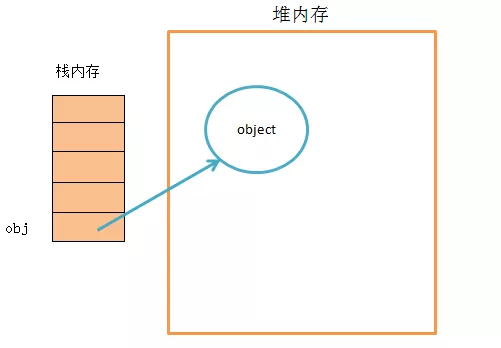We read every piece of feedback, and take your input very seriously.
To see all available qualifiers, see our documentation.
Have a question about this project? Sign up for a free GitHub account to open an issue and contact its maintainers and the community.
By clicking “Sign up for GitHub”, you agree to our terms of service and privacy statement. We’ll occasionally send you account related emails.
Already on GitHub? Sign in to your account
值是不可变的
存放在栈区中
值的比较
== : 只进行值的比较,会进行数据类型的转换。 === : 不仅进行值得比较,还要进行数据类型的比较。
==
===
值是可变的
同时保存在栈内存和堆内存
比较是引用的比较
ES6新增,表示独一无二的值。这个知识点以后再深入学习。
BigInt数据类型的目的是比 Number 数据类型支持的范围更大的整数值。在对大整数执行数学运算时,以任意精度表示整数的能力尤为重要。使用 BigInt,整数溢出将不再是问题。
JS 中的 Number 类型只能安全地表示 -9007199254740991 (-(2^53-1)) 和 9007199254740991(2^53-1) 之间的整数,任何超出此范围的整数值都可能失去精度。
-9007199254740991 (-(2^53-1))
9007199254740991(2^53-1)
console.log(9999999999999999); // → 10000000000000000 // 注意最后一位的数字 9007199254740992 === 9007199254740993; // → true
目前的开发中,此数据类型比较少用,更多详情参考此篇文章:JS最新基本数据类型:BigInt
undefined
null
相同:
Boolean(value)
!!value
false
不同:
true
console.log(null == undefined); // true console.log(null === undefined); // false
尽管JavaScript可以自动做许多类型转换,但有时仍需要做显式转换,或者为了使代码变得清晰易读而做显式转换。
做显式类型转换最简单的方法就是使用 Boolean()、Number()、String() 或 Object() 函 数。
Boolean()
Number()
String()
Object()
Number( "3“ ) // 3 String(false) // "false" 或使用false.toString() Object(3) // Number(3) Boolean([]) // true Boolean('') // false
ECMA中,Boolean([]) 和Boolean('') 的解释:
Boolean([])
Boolean('')
Boolean() 用的是 ToBoolean 方法; 参数为 String 中,string 长度为 0,也就是空字符串 ”” 时,Boolean 显式转换为 false,非空字符串为 true; 而参数只要是 Object 类型,都被 Boolean 显示转换成 true,而众所周知,[] 数组属于 Object 类型的一种。
ToBoolean
String
string
0
””
Boolean
Object
[]
+ 是将字符串转换为数字的最快方法,因为如果值已经是数字,它不会执行任何操作。
+
JavaScript中的某些运算符会做隐式的类型转换:
x+"" // 等价于 String(x) 如88 + '6' => ’886’ +x // 等价于 Number(x).也可以写成x-0 如+'886' => number类型的886 !!x // 等价于Boolean(x) 如 !!'886' => true
typeof
适用场景
typeof 操作符可以准确判断一个变量是否为下面几个原始类型:
typeof 'ConardLi' // string typeof 123 // number typeof true // boolean typeof Symbol() // symbol typeof undefined // undefined
还可以用它来判断函数类型:
typeof function(){} // function
不适用场景
当用 typeof 来判断引用类型时似乎显得有些乏力了:
typeof [] // object typeof {} // object typeof new Date() // object typeof /^\d*$/; // object
代码除函数外所有的引用类型都会被判定为object。 另外typeof null === 'object'也会让人感到头痛,这是在JavaScript初版就流传下来的bug,后面由于修改会造成大量的兼容问题就一直没有被修复。
instanceof
instanceof 操作符可以帮助我们判断引用类型具体是什么类型的对象:
[] instanceof Array // true new Date() instanceof Date // true new RegExp() instanceof RegExp // true
[] instanceof Array 实际上是判断 Array.prototype 是否在 [] 的原型链上。所以,使用 instanceof 来检测数据类型,不会很准确,这不是它设计的初衷:
[] instanceof Array
Array.prototype
[] instanceof Object // true function(){} instanceof Object // true
另外,使用 instanceof 也不能检测基本数据类型,所以 instanceof 并不是一个很好的选择。
toString
Object.prototype.toString.call() 最准确最常用的方式。首先获取 Object 原型上的 toString 方法,让方法执行,让 toString 方法中的 this 指向第一个参数的值。
Object.prototype.toString.call()
每一个引用类型都有 toString 方法,默认情况下,toString() 方法被每个 Object 对象继承。如果此方法在自定义对象中未被覆盖,toString() 返回 "[object type]",其中 type 是对象的类型。事实上,大部分引用类型比如Array、Date、RegExp等都重写了toString方法。因此可以直接调用 Object 原型上未被覆盖的 toString() 方法,使用 call 来改变 this 指向来达到我们想要的效果。
toString()
"[object type]"
call
Object.prototype.toString.call('') ; // [object String] Object.prototype.toString.call(1) ; // [object Number] Object.prototype.toString.call(true) ; // [object Boolean] Object.prototype.toString.call(undefined) ; // [object Undefined] Object.prototype.toString.call(null) ; // [object Null] Object.prototype.toString.call(new Function()) ; // [object Function] Object.prototype.toString.call(new Date()) ; // [object Date] Object.prototype.toString.call([]) ; // [object Array] Object.prototype.toString.call(new RegExp()) ; // [object RegExp] Object.prototype.toString.call(new Error()) ; // [object Error] Object.prototype.toString.call(document) ; // [object HTMLDocument] Object.prototype.toString.call(window) ; //[object global] window是全局对象global的引用
indexOf
lastIndexOf
NaN
+0
-0
Set
Map
include
Object.is
The text was updated successfully, but these errors were encountered:
No branches or pull requests
JavaScript 中的数据类型
堆和栈
基本数据类型与引用数据类型
基本数据类型
值是不可变的
存放在栈区中
值的比较
引用数据类型
值是可变的
同时保存在栈内存和堆内存

比较是引用的比较
第六种基本数据类型:Symbol
ES6新增,表示独一无二的值。这个知识点以后再深入学习。
第七种基本数据类型:BigInt
BigInt数据类型的目的是比 Number 数据类型支持的范围更大的整数值。在对大整数执行数学运算时,以任意精度表示整数的能力尤为重要。使用 BigInt,整数溢出将不再是问题。
JS 中的 Number 类型只能安全地表示
-9007199254740991 (-(2^53-1))和9007199254740991(2^53-1)之间的整数,任何超出此范围的整数值都可能失去精度。目前的开发中,此数据类型比较少用,更多详情参考此篇文章:JS最新基本数据类型:BigInt
undefined和null的区别相同:
Boolean(value)或者!!value转换为布尔值时为false不同:
undefined是未指定特定值的变量的默认值,或者没有显式返回值的函数null是“不代表任何值的值”null和undefined时,我们使用==时得到true,使用===时得到false:类型转换
显示转换与隐式转换
显示类型转换
尽管JavaScript可以自动做许多类型转换,但有时仍需要做显式转换,或者为了使代码变得清晰易读而做显式转换。
做显式类型转换最简单的方法就是使用
Boolean()、Number()、String()或Object()函 数。ECMA中,
Boolean([])和Boolean('')的解释:Boolean()用的是ToBoolean方法;参数为
String中,string长度为0,也就是空字符串””时,Boolean显式转换为false,非空字符串为true;而参数只要是
Object类型,都被Boolean显示转换成true,而众所周知,[]数组属于Object类型的一种。隐式类型转换
JavaScript中的某些运算符会做隐式的类型转换:
检验数据类型
1.
typeof适用场景
typeof操作符可以准确判断一个变量是否为下面几个原始类型:还可以用它来判断函数类型:
不适用场景
当用
typeof来判断引用类型时似乎显得有些乏力了:代码除函数外所有的引用类型都会被判定为object。
另外typeof null === 'object'也会让人感到头痛,这是在JavaScript初版就流传下来的bug,后面由于修改会造成大量的兼容问题就一直没有被修复。
2.
instanceofinstanceof操作符可以帮助我们判断引用类型具体是什么类型的对象:[] instanceof Array实际上是判断Array.prototype是否在[]的原型链上。所以,使用instanceof来检测数据类型,不会很准确,这不是它设计的初衷:另外,使用
instanceof也不能检测基本数据类型,所以instanceof并不是一个很好的选择。3.
toStringObject.prototype.toString.call()最准确最常用的方式。首先获取 Object 原型上的 toString 方法,让方法执行,让 toString 方法中的 this 指向第一个参数的值。每一个引用类型都有
toString方法,默认情况下,toString()方法被每个 Object 对象继承。如果此方法在自定义对象中未被覆盖,toString()返回"[object type]",其中 type 是对象的类型。事实上,大部分引用类型比如Array、Date、RegExp等都重写了toString方法。因此可以直接调用 Object 原型上未被覆盖的toString()方法,使用call来改变 this 指向来达到我们想要的效果。四种相等性算法
===,indexOf,lastIndexOf认为NaN与NaN不等,+0与-0相等==Set,Map,include等 认为NaN与NaN相等,+0与-0相等Object.is认为NaN与NaN相等,+0与-0不等参考资料
The text was updated successfully, but these errors were encountered: